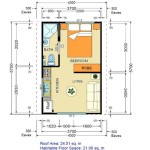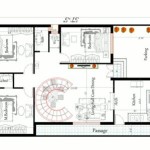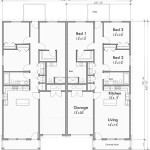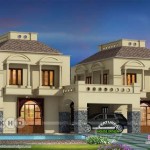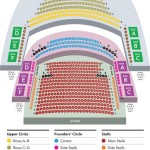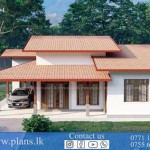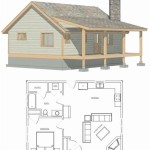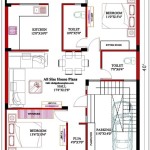European Country Cottage House Plans: A Timeless Aesthetic
European country cottage house plans evoke a sense of warmth, comfort, and timeless charm. These designs, inspired by the rural architecture of various European regions, offer a compelling alternative to modern, minimalist styles. They emphasize natural materials, cozy interiors, and a connection to the surrounding landscape. Understanding the key features and variations within this architectural style is crucial for anyone considering building or renovating a home in this tradition.
The appeal of European country cottage house plans lies in their ability to create a sense of sanctuary and refuge. They stand in stark contrast to the often-sterile aesthetics of contemporary architecture, offering a comforting familiarity that resonates with many homeowners. This style is frequently associated with sustainability, as it often incorporates locally sourced materials and energy-efficient designs.
This architectural approach is not limited to a single region or aesthetic. Instead, it encompasses a range of styles influenced by the specific building traditions and landscapes of different European countries. From the stone farmhouses of France to the timber-framed cottages of England, each variation possesses distinct characteristics that contribute to the overall charm of the genre.
Key Characteristics of European Country Cottage House Plans
Several defining features consistently appear in European country cottage house plans, regardless of regional variations. These elements contribute to the overall aesthetic and functionality of the design.
One of the most prominent characteristics is the emphasis on natural materials. Stone, brick, wood, and locally sourced materials are commonly used in construction, creating a sense of authenticity and connection to the surrounding environment. The exterior often features exposed brick or stone, wood siding, and steeply pitched roofs covered in slate or tile.
The roofline is another defining characteristic. Steeply pitched roofs are common, often incorporating gables, dormers, and intricate detailing. This not only enhances the aesthetic appeal but also provides practical benefits, such as improved drainage and increased attic space. Roof materials often complement the natural materials used elsewhere in the building, creating a cohesive and harmonious design.
Windows play a crucial role in the overall design of European country cottages. Multi-paned windows, often with decorative shutters, are common. These windows allow ample natural light to flood the interior spaces, while also contributing to the visual appeal of the facade. Window boxes filled with flowers are frequently incorporated, adding a touch of color and charm.
The landscaping surrounding a European country cottage is integral to the overall aesthetic. Gardens filled with wildflowers, herbs, and climbing vines are common. Stone pathways, patios, and outdoor seating areas create inviting spaces for relaxation and entertaining. The landscaping is often designed to blend seamlessly with the surrounding natural environment, creating a sense of harmony and tranquility.
Interior spaces are typically designed to be cozy and inviting. Fireplaces are often central features, providing warmth and ambiance. Exposed beams, wood floors, and natural stone accents add to the rustic charm. The layout is often designed to maximize functionality and flow, with open-plan living areas and well-defined spaces for cooking, dining, and relaxing.
Regional Variations in European Country Cottage Design
While core characteristics remain consistent, distinct regional variations exist within the umbrella of European country cottage house plans. Each region's unique building traditions, climate, and available materials have shaped its own particular style.
French Country designs often feature stone or stucco facades, steeply pitched roofs with dormers, and decorative shutters. Interiors are typically warm and inviting, with exposed beams, fireplaces, and natural stone accents. The landscaping surrounding French Country houses often includes formal gardens, gravel pathways, and lavender fields.
English Cottage designs typically showcase timber framing, brick accents, and thatched roofs. Interiors are often cozy and charming, with low ceilings, exposed beams, and inglenook fireplaces. Gardens surrounding English Cottages are typically informal and romantic, with wildflowers, climbing roses, and winding pathways.
Tuscan-style designs, inspired by the Italian countryside, often feature stone or stucco facades, terracotta tile roofs, and arched doorways. Interiors are typically warm and rustic, with exposed beams, stone floors, and plaster walls. Landscaping surrounding Tuscan-style houses often includes olive groves, vineyards, and cypress trees.
Scandinavian Cottage designs often prioritize simplicity and functionality. Exteriors are typically clad in wood siding, with gently sloping roofs and large windows to maximize natural light. Interiors are bright and airy, with minimalist furnishings and a focus on natural materials. Landscaping surrounding Scandinavian Cottages often includes birch trees, wildflowers, and natural stone features.
German Country designs frequently incorporate half-timbered construction, with exposed wooden beams and infill panels made of brick or stucco. Roofs are typically steeply pitched, with dormers and decorative detailing. Interiors are often cozy and practical, with wood floors, fireplaces, and traditional German furnishings. Gardens surrounding German Country houses often include vegetable gardens, fruit trees, and flowerbeds.
Factors to Consider When Choosing a European Country Cottage House Plan
Selecting the right European country cottage house plan involves careful consideration of several factors. These factors include site conditions, budget, lifestyle, and personal preferences.
Site conditions play a crucial role in determining the feasibility of a particular design. The size and shape of the lot, the topography, the soil conditions, and the climate all influence the type of house that can be built. It is essential to consult with a qualified architect or builder to assess the site conditions and determine the most appropriate design.
Budget is another important consideration. The cost of building a European country cottage can vary significantly, depending on the size of the house, the materials used, and the level of customization. It is crucial to establish a realistic budget and to work with a contractor who can provide accurate cost estimates. Consider that the use of locally sourced materials, while in-keeping with the style, may be more or less expensive than standard construction materials. The intricacy of the roof design can also impact labour costs.
Lifestyle considerations are also important. The layout of the house should be designed to accommodate the needs and preferences of the occupants. Consider the number of bedrooms and bathrooms required, the size of the living areas, and the need for specialized spaces such as a home office or a workshop. Some layouts are designed for open-plan living, while others prioritize distinct, separate spaces.
Personal preferences play a significant role in the selection of a suitable house plan. Ultimately, the goal is to create a home that is both functional and aesthetically pleasing. It is important to consider the overall style of the house, the materials used, the color palette, and the landscaping. Gathering inspiration from various sources, such as magazines, books, and online resources, can help clarify personal preferences and inform the design process.
Furthermore, it's important to note the integration of modern amenities into traditional designs. While the exterior evokes a timeless charm, the interior can be adapted to incorporate modern technology and conveniences. This might involve incorporating energy-efficient heating and cooling systems, smart home technology, and updated kitchen appliances while maintaining the overall aesthetic.
Finally, sustainability is a key consideration for many homeowners. European country cottage house plans can be designed to incorporate sustainable features, such as solar panels, rainwater harvesting systems, and energy-efficient windows and doors. The use of locally sourced materials can also contribute to the overall sustainability of the project. Carefully consider the environmental impact of the building materials and construction methods used.

Plan 69128am European Cottage With High Ceilings Small House Plans Country Homes

Plan 11551kn European Cottage French Country House Plans

European Style With 3 Bed 2 Bath Car Garage Small House Plans Floor Plan

House Plan 3323 00151 Colonial 2 611 Square Feet 3 Bedrooms 5 Bathrooms Cottage Plans French Country

Houses And Cottages In The European Style Eplan House

Reconnaissante Cottage House Plan Archival Designs
Ooh La Discover French Country House Plans Houseplans Blog Com

Country Style House Plan 3 Beds 2 5 Baths 2680 Sq Ft 429 308 Cottage Plans

House Plan 75135 French Country Style With 3230 Sq Ft 3 Bed

European House Plans Designs

